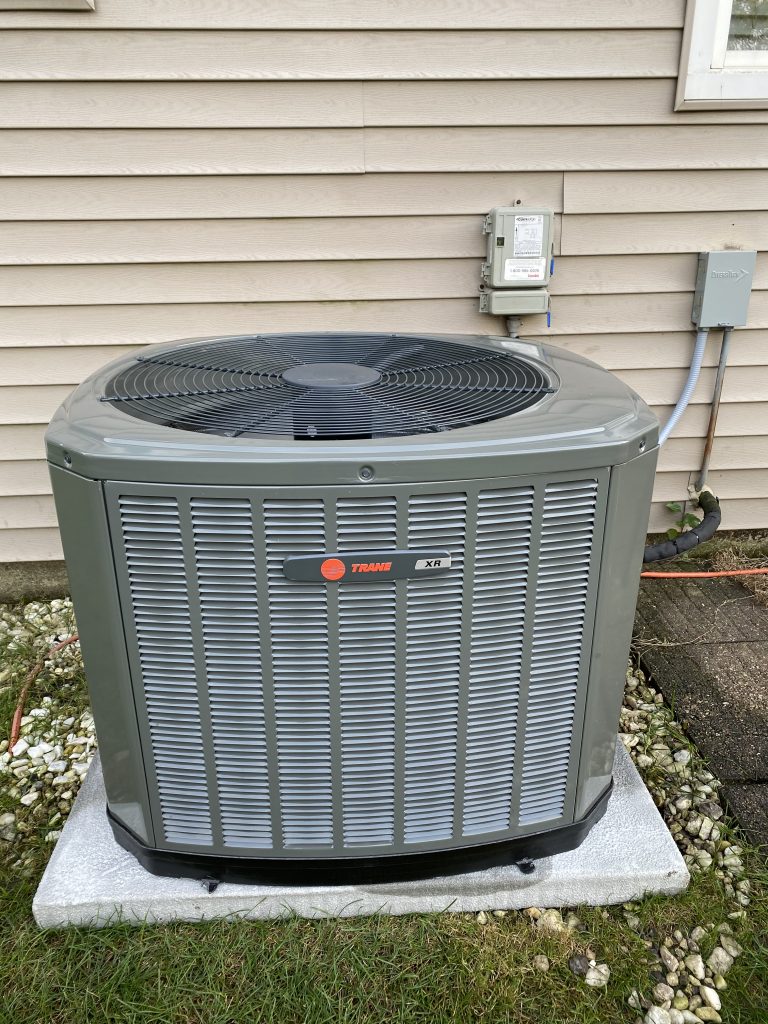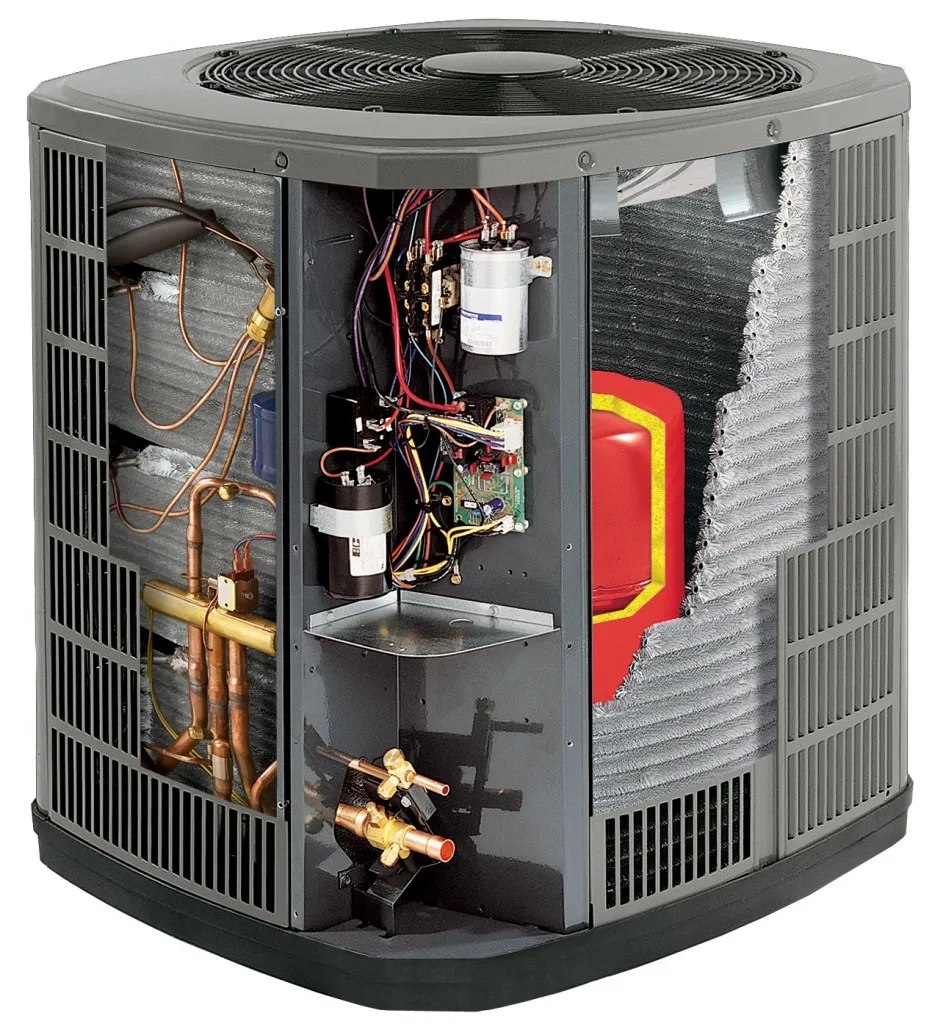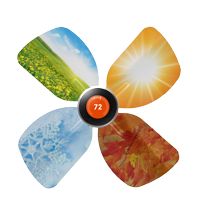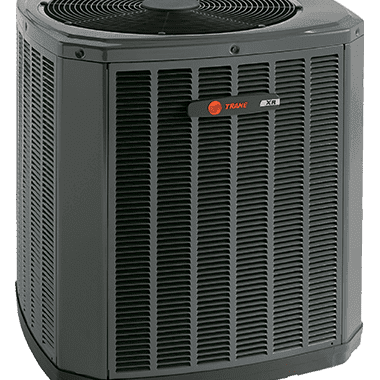
Ukraine-Russian war, the Covid-19 pandemic and the and all increases in food and energy prices, and the cold Chicago land winter all made people start searching for a new reliable heat source that can save money and match the Midwest home structure design, one of the hot topics is Heat Pump.
However, heat pumps can deliver an energy-efficient source of warmth in your home, especially when installed with another backup source of heat such as the gas furnace, electric heater, or boiler as a dual-fuel system for ultimate home comfort.
What Is a Heat Pump?
In summer time Heat pump system works 100% as an air conditioning condenser, and it absorbs heat from the conditioning space and rejects it to the outdoors, and during winter time system reverses the operation, in winter time the outdoor condenser picks up heat from the surrounding and it rejects it in the condition inside space.
How Does a Heat Pump Work?
Heat pumps do not create heat. They redistribute heat from the air or ground and use a refrigerant that circulates between the indoor fan coil (air handler) unit and the outdoor compressor to transfer the heat.
In cooling mode, a heat pump absorbs heat inside your home and releases it outdoors. In heating mode, the heat pump absorbs heat from the ground or outside air (even cold air) and releases it indoors.
how does air source heat pumps work?
An air-source heat pump can provide efficient heating and cooling for your home. When properly installed, an air-source heat pump can deliver up to three times more heat energy to a home than the electrical energy it consumes.
This is possible because a heat pump transfers heat rather than converting it from a fuel-like combustion heating system.
Air-source heat pumps have been used for many years in nearly all parts of the United States, except in areas that experienced extended periods of subfreezing temperatures.
However, in recent years, air-source heat pump technology has advanced so that it now offers a legitimate space-heating alternative in colder regions.

What is the Emergency Heat Option in Heat Pump Setup?
Emergency Heat is a feature that disables compressor operation and only allows backup heat operation.
When equipped, the homeowner can simply push a button on the thermostat to direct all calls for heat to the furnace. The HP remains disabled.
What is Heat Pump Supplemental Heat?
Supplemental Heat is a term applied to AHUs and their use of electric heat strips. During the heating mode, the 1st stage of heat will be the heat pump itself.
If room temperature continues to fall, electric heat is added as the 2nd stage and 3rd stage, and 4th stage if so equipped. This is referred to as a straight electrical heat application.
What is Heat Pump Auxiliary Heat?
Auxiliary Heat is a term applied to a backup heat source including electric heat and gas furnaces. In heating mode, the HP is set to run as 1st stage. When demand requires more heat, The HP shuts down and the backup heat is cycled on. A furnace used as backup heat is expressed as 2nd stage (and 3rd stage if a two-stage furnace was applied). We call this a “dual fuel” application.
What is Heat Pump Restricted and Lockout?
Restricted and Lockout are terms that describe control strategies of the HP compressor and furnace.
For example, we can program a thermostat to lock out the heat pump when the OAT lowers below a select temperature like 35°F.
Or we can choose to lockout the furnace whenever the OAT rises above a select temperature like 45°F or perhaps we want to do both, creating a band of control where either one may be running to maintain the house at setpoint, in this case between 35°F and 45°F.
Only premium thermostats like the Trane Technologies TCONT1050 will have this level of programming.
Heat Pump Outdoor Air Temperature Sensors (OAT).
Outdoor Air Temperature Sensors (OAT) are required to manage heat pump operations. There are two OAT sensors to be aware of.
The heat pump itself contains an OAT sensor and a coil temperature sensor that together monitors ice buildup on the outdoor coil which occurs normally on an HP during heating mode.
A separate OAT sensor is applied to the thermostat controller providing OAT display and programming options including compressor restrictions and lockouts of the HP.
What is Heat Pump Defrost Mode?
Defrost is a mode of operation that removes ice and frost that has built up on the outdoor coil during the heating mode. The buildup has reached a limit and must be removed.
The defrost function is not a decision made by the indoor thermostat. The outdoor unit’s circuit board monitors the coil temperature and OAT sensor.
When defrosting initiates, the reversing valve is cycled, the outdoor unit’s fan is turned off and a call for heat is directed to the indoor unit to start supplemental or auxiliary heat depending on the application. Hot high-pressure gas thaws the outdoor coil.
Ground-Source Heat Pumps
Ground-source or geothermal heat pumps absorb heat from underground to transfer it indoors or outdoors.
The most common type of ground-source heat pump uses buried pipes filled with refrigerant or water to transfer heat.
The pipes can be part of an open or closed-loop system to either pump new water in and out through an underground water source or circulate the same water through the pipes repeatedly.
Heat Pump Vs. Furnace: Pros and Cons
The main difference between heat pumps and furnaces is that, unlike furnaces, heat pumps do not generate heat. While both types of HVAC systems can provide a comfortable environment inside your home, there are a variety of factors that can affect which option may be better suited for your heating needs.
Chicago Climate Considerations
During Chicago winters where the temperature regularly falls below freezing, a furnace is generally able to heat your home more efficiently than a heat pump.
If you live in milder climates, a heat pump can provide adequate heating inside your home without using too much energy.
However, pairing a furnace and a heat pump creates a dual fuel system that can handle both mild and below-freezing temperatures, switching between heat sources depending on the outdoor temperature and home heating needs.
Are you Looking to Install a Heat Pump System in Your Home? Call Us Now to Get a Free Quote from The Experts at Any Season Heating & Cooling Inc!
If you’re considering installing a heat pump system in your home, contact a certified HVAC technician at Any Season Heating & Cooling! Give us a call at (847) 766-9654 or send a text to (847) 766-9654 or use our contact form to schedule an appointment for a technician to provide a free quote and discuss what options best fit your needs.
Follow Us on Social Media: Google Maps | Facebook | Twitter | LinkedIn | Facebook



2 Replies to “Heat Pump in Chicago land – All you Need to Know”
Expert American Standard Heating and Air Conditioning Installer
[…] a wide range of American Standard HVAC systems, including central air conditioners, furnaces, heat pumps, and ductless […]
Heat Pump Installation in Chicagoland: An Energy-Efficient Solution
[…] heat pump system works by transferring heat from one place to another, either from the air outside to the inside of […]
Comments are closed.